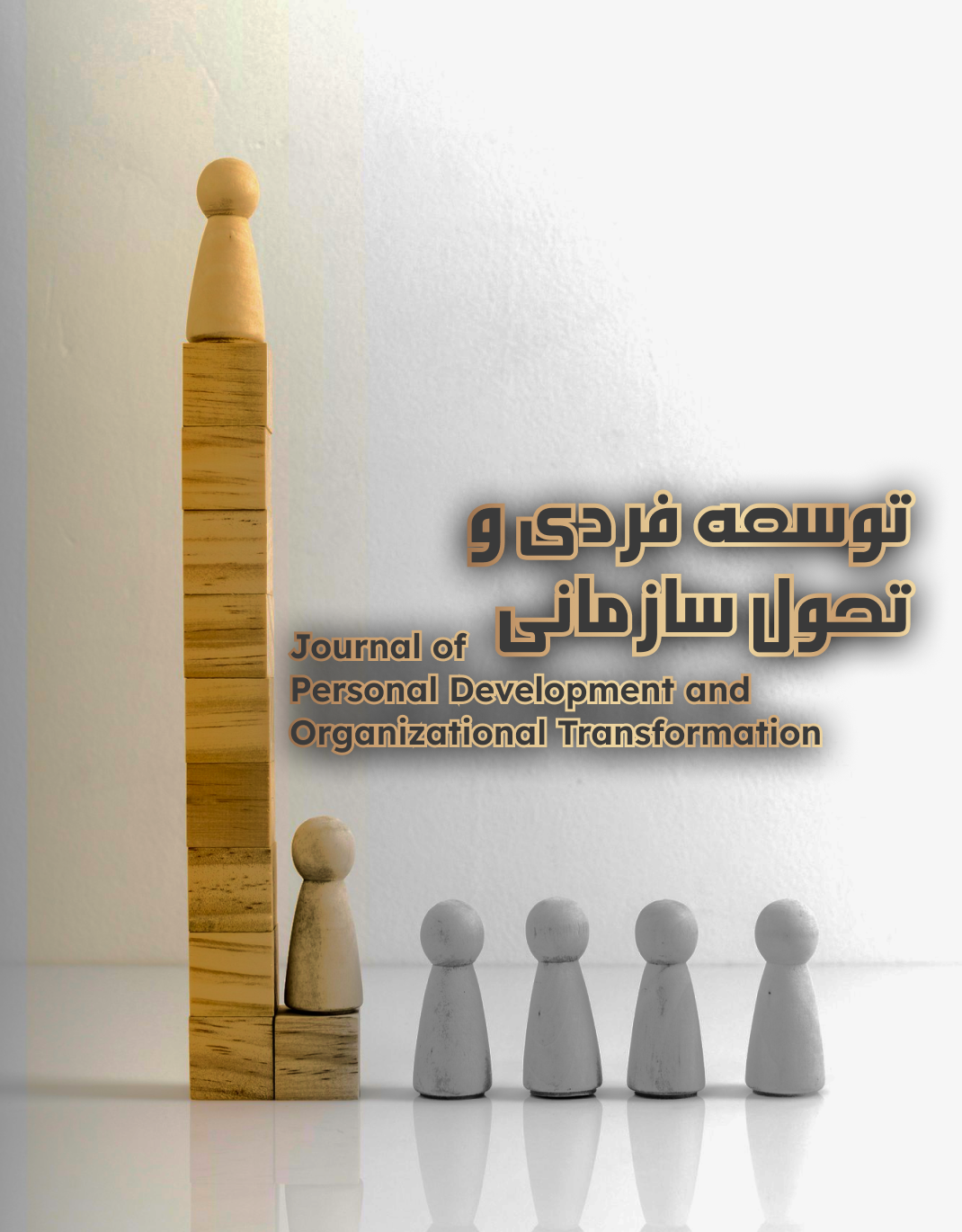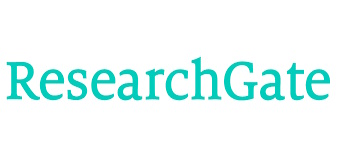شناسایی و اولویتبندی عوامل مؤثر بر آوای سازمانی در دانشگاه علوم پزشکی زنجان با استفاده از روش دلفی فازی
کلمات کلیدی:
آوای سازمانی, دلفی فازی, دانشگاه علوم پزشکی زنجان, فرهنگ مشارکتی, سکوت سازمانیچکیده
هدف این پژوهش شناسایی و اولویتبندی عوامل مؤثر بر آوای سازمانی در دانشگاه علوم پزشکی زنجان با استفاده از رویکرد ترکیبی کیفی-کمی و روش دلفی فازی بود. در بخش کیفی، ۲۳ نفر از خبرگان و مدیران دانشگاه با روش نمونهگیری گلولهبرفی انتخاب شدند. از طریق مصاحبههای نیمهساختاریافته و مرور ادبیات (منابع داخلی و خارجی)، ۱۴ عامل کلیدی در سه بعد فردی (منجمله اعتماد به نفس، انگیزه درونی)، سازمانی (فرهنگ سازمانی، پذیرش سازمانی، سطوح سازمانی) و اجتماعی (روحیه تیمی، تعاملات اجتماعی) استخراج گردید. در بخش کمی، این عوامل طی سه مرحله دلفی فازی با استفاده از پرسشنامههای مبتنی بر طیف لیکرت ارزیابی شدند. اهمیت عوامل با معیار دیفازی ≥ ۴ تأیید شد. نتایج نشان داد که پذیرش سازمانی، سطوح سازمانی و فرهنگ سازمانی بالاترین اولویت را دارند، در حالی که اعتماد به نفس و روحیه تیمی نیز تأثیر قابلتوجهی دارند. این یافتهها بیانگر ضرورت بازطراحی ساختارهای مدیریتی و تقویت فرهنگ مشارکتی در محیط بوروکراتیک دانشگاه است. نتایج میتوانند به مدیران در تدوین سیاستهایی برای کاهش سکوت سازمانی، ترویج نوآوری (مانند ایدهپردازی برای بهبود خدمات درمانی)، تقویت ارتباطات بینسازمانی و اجرای برنامههای آموزشی (مانند کارگاههای مهارتهای رهبری مشارکتی و مدیریت تغییر) کمک کنند. این پژوهش بهعنوان الگویی برای سایر دانشگاههای علوم پزشکی نیز قابلاستفاده است.
دانلودها
مراجع
Abdulgalimov, D., Kirkham, R., Lindsay, S., Nicholson, J., Vlachokyriakos, V., Dao, E., Kos, D., Jitnah, D., Briggs, P., & Olivier, P. (2023). Designing for the Embedding of Employee Voice. Proceedings of the Acm on Human-Computer Interaction, 7(CSCW1), 1-31. https://doi.org/10.1145/3579478
Abdulla, F. N. (2019). Silence in the Islands; An Exploratory Study of Employee Silence in the Maldives. Journal of Social and Political Sciences, 2(3). https://doi.org/10.31014/aior.1991.02.03.118
Alang, T., Stanton, P., & Trau, R. (2020). Exploring Indigenous Employee Voice Practice: Perspectives From Vietnamese Public Sector Organisations. Asia Pacific Journal of Human Resources, 58(4), 555-577. https://doi.org/10.1111/1744-7941.12261
Bernauer, V. S., & Kornau, A. (2022). E‐voice in the Digitalised Workplace. Insights From an Alternative Organisation. Human Resource Management Journal, 34(2), 369-385. https://doi.org/10.1111/1748-8583.12460
Brooks, S. (2024). Coaching as a Route to Voice: A Framework for Change. The Coaching Psychologist, 20(1), 50-62. https://doi.org/10.53841/bpstcp.2024.20.1.50
Chen, H., Li, Y., Chen, L., & Yin, J. (2020). Understanding Employees' Adoption of the Bring-Your-Own-Device (BYOD): The Roles of Information Security-Related Conflict and Fatigue. Journal of Enterprise Information Management, 34(3), 770-792. https://doi.org/10.1108/jeim-10-2019-0318
Duan, J., Lapointe, É., Xu, Y., & Brooks, S. (2019). Why Do Employees Speak Up? Examining the Roles of LMX, Perceived Risk and Perceived Leader Power in Predicting Voice Behavior. Journal of managerial psychology, 34(8), 560-572. https://doi.org/10.1108/jmp-11-2018-0534
Duarte, M., Conceição, O., & Pinto, S. O. C. (2024). What Does Employee Silence Mean? The Role of Organizational Climate and Burnout. Ecmlg, 20(1), 486-494. https://doi.org/10.34190/ecmlg.20.1.2913
Gip, H., Guchait, P., & Madera, J. M. (2024). Perceived Inclusion Climate for Leader Diversity: Conceptualization and Scale Development. International Journal of Contemporary Hospitality Management, 36(13), 77-96. https://doi.org/10.1108/ijchm-09-2023-1378
Gustave, N., & Chapa, K. (2023). Ex Factor: Is Leveraging Mentoring &Amp; Sponsorship to Fast Track Diverse Leadership Pipelines Underestimated in Employee Experience (EX)? https://doi.org/10.2118/216183-ms
Hague, L., Barry, M., Mowbray, P. K., Wilkinson, A., & Avgar, A. C. (2024). Employee Voice in Healthcare: A systematic Review. Journal of Health Organization and Management. https://doi.org/10.1108/jhom-11-2023-0353
Hazelzet, E., Bosma, H., Rijk, A. d., & Houkes, I. (2020). Does Dialogue Improve the Sustainable Employability of Low-Educated Employees? A Study Protocol. European journal of public health, 30(Supplement_5). https://doi.org/10.1093/eurpub/ckaa166.1359
Hazelzet, E., Houkes, I., Bosma, H., & Rijk, A. d. (2022). How a Steeper Organisational Hierarchy Prevents Change—adoption and Implementation of a Sustainable Employability Intervention for Employees in Low-Skilled Jobs: A Qualitative Study. BMC public health, 22(1). https://doi.org/10.1186/s12889-022-14754-w
Kee, K., Nies, H., Wieringen, M. v., & Beersma, B. (2024). Exploring Barriers to Employee Voice Among Certified Nursing Assistants: A Qualitative Study. Health Care Management Review, 49(4), 291-300. https://doi.org/10.1097/hmr.0000000000000415
Khan, H., Chowdhury, M. S., & Kang, D. s. (2022). Leaders’ Emotion Regulation and the Influence of Respect and Entitlement on Employee Silence. Sustainability, 14(4), 2389. https://doi.org/10.3390/su14042389
Latif, M. A., Vang, J., & Sultana, R. (2021). Individuals' Psychosocial Voice barriers in Lean Problem-Solving Teams. International Journal of Productivity and Performance Management, 72(5), 1321-1337. https://doi.org/10.1108/ijppm-11-2020-0618
Lohse, A., Dilba, D., & Bullinger, A. C. (2023). Propositions for the Assessment and Removal of Communication-Related Barriers to Innovation in SMEs. https://doi.org/10.31219/osf.io/mqgjd
Nazeer, S., Naveed, S., Sair, S. A., & Khan, K. (2025). Making Sustainable Voices Heard at the Workplace. International Journal of Ethics and Systems. https://doi.org/10.1108/ijoes-09-2024-0298
Qi, M., & Liu, F. (2024). Promotive and Prohibitive Ethical Voice in Groups: The Effect of Faultlines and Role Ambiguity. Humanities and Social Sciences Communications, 11(1). https://doi.org/10.1057/s41599-024-02799-8
Rasheed, M. A., Hussain, A., Hashwani, A., Kedzierski, J. T., & Hasan, B. (2022). Implementation Evaluation of a Leadership Development Intervention for Improved Family Experience in a Private Paediatric Care Hospital, Pakistan. BMC Health Services Research, 22(1). https://doi.org/10.1186/s12913-022-08342-2
Ricciardelli, R., Carleton, R. N., Gacek, J., & Groll, D. (2020). Understanding Needs, Breaking Down Barriers: Examining Mental Health Challenges and Well-Being of Correctional Staff in Ontario, Canada. Frontiers in psychology, 11. https://doi.org/10.3389/fpsyg.2020.01036
Skinner, N., Dijk, P. v., Stothard, C., & Fein, E. C. (2018). “It Breaks Your Soul”: An In‐depth Exploration of Workplace Injustice in Nursing. Journal of nursing management, 26(2), 200-208. https://doi.org/10.1111/jonm.12535
ToksÖZ, S. (2021). Etnik Olarak Farklı İş Gücünü Yönetmede İç İletişimin Etkinliği: Nakheel Şirketi Üzerine Bir Çalışma. Opus Uluslararası Toplum Araştırmaları Dergisi, 17(34), 855-872. https://doi.org/10.26466/opus.723288
Wilkinson, A., Ressia, S., & Mowbray, P. K. (2023). The Complexities of Employee Voice Within a Multiculturally Diverse Aged Care Workforce Setting. Asia Pacific Journal of Human Resources, 61(3), 511-534. https://doi.org/10.1111/1744-7941.12375
دانلود
چاپ شده
ارسال
بازنگری
پذیرش
شماره
نوع مقاله
مجوز
حق نشر 2025 سمیه مرجانی (نویسنده); محمد خیراندیش; اسحاق رسولی, حبیب ابراهیم پور (نویسنده)

این پروژه تحت مجوز بین المللی Creative Commons Attribution-NonCommercial 4.0 می باشد.







